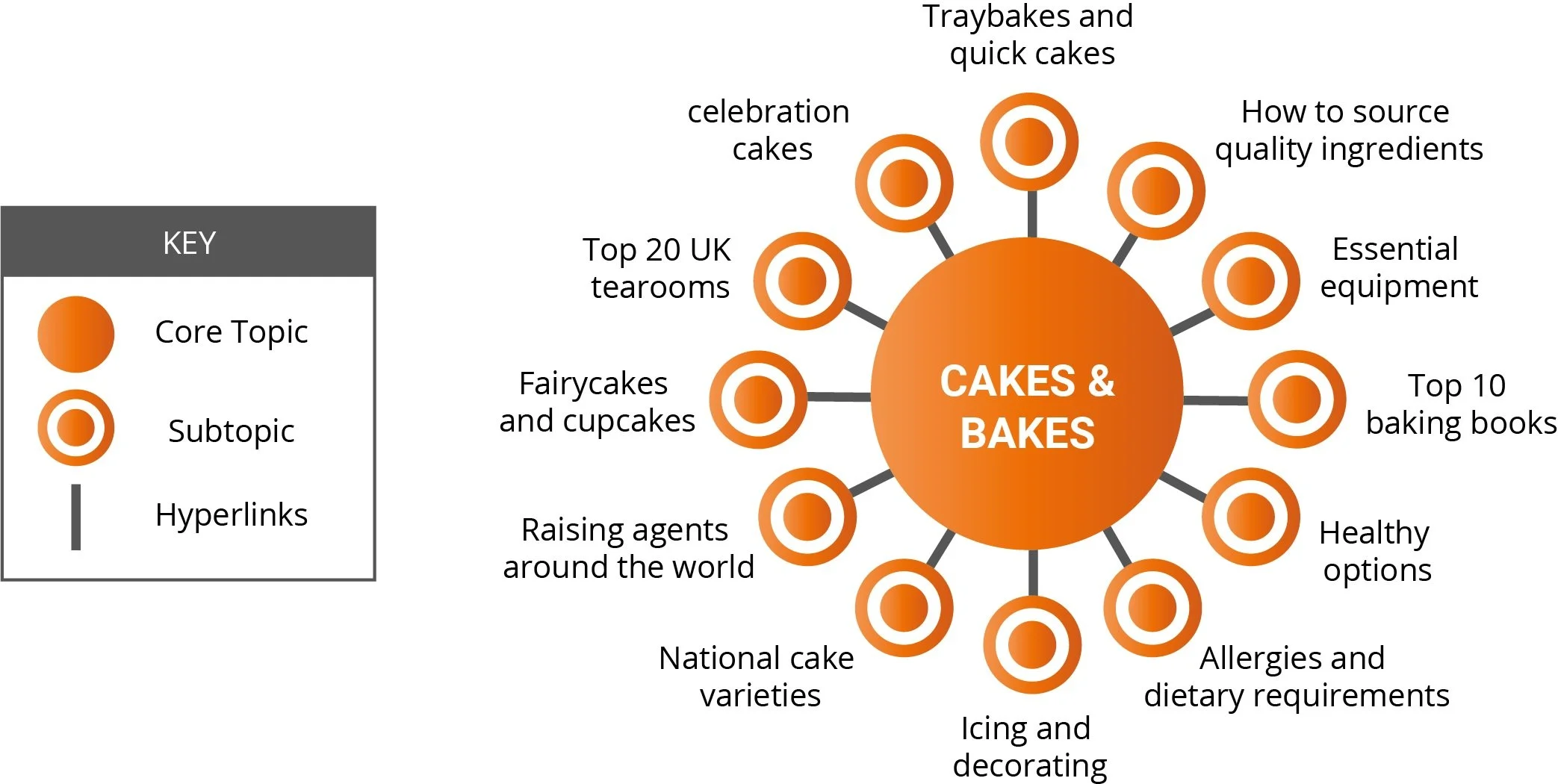Convert your social media followers into website traffic
A strong social media presence is vital in helping you grow your brand’s fanbase and followers. While having social media followers is great and offers a good litmus regarding your brand’s overall popularity, you want to turn those fans into active customers. To achieve this, you need to guide them towards your website, where they can explore your products or services and—crucially—start purchasing them.
In our latest blog, we share the process you can adopt to develop an effective and streamlined content creation process for your website.
Develop Content Clusters
If you’ve done your research, you’ll know where to find your target audience on social media. One of the most basic approaches is to consider the demographics of your typical customer groups. For example, how old are they?
Instagram, for example, is popular with people aged between 18 and 24. While Facebook is more popular with a slightly older age range, 18 to 35 years (although, for men, it’s the same as Instagram; 18-24). If your brand is B2B, you should have a LinkedIn company page.
Now that you know where your ideal customers like to hang out, you need to get them to engage with your brand by regularly serving them high-quality content that entices them to click through to your website.
Producing an ongoing stream of quality content isn’t easy without planning. So, you need to develop a strategy to minimise the day-to-day stress of creating clickable content to post. This starts with creating what is known as “content clusters.”
Content clusters are themed groups of ideas drawn from your target audience's research findings. They live on your website as pages, and your social media should drive users to those pages.
Here’s an example of a bakery’s content cluster for cakes and bakes.
Image credit: esminbound.com
As a side note, it’s worth noting that creating content clusters on your website is an SEO dream. Topic clusters help search engines better understand the hierarchy of your website. As such, they may help search engines see your site as an authority on a specific subject. It’s best to hyperlink each page within the cluster to the other pages. This network of internal links tells the search engines that you are an authority with a depth of knowledge on the pillar subject. That authority improves your ranking, meaning more people will see your website when they search for related keywords.
“Pillar pages” or “hub pages” cover a topic broadly. A bookstore might create a “Crime” hub, for instance. Around that hub will sit several different “spoke pages” that represent the target audience’s more niche interests, e.g., “Serial Killers,” “Crime Trilogies,” “Financial Crime,” and “Gangland Crime.” The deeper you go into each subject, adding spokes to spokes—such as “Fraud and Collusion” as a spoke of “Financial Crime”.
Creating a content calendar
Once you have developed enough content themes, you can develop a content calendar. One of the best ways to do that is simply in a spreadsheet. A content calendar (also called an editorial calendar) is a schedule that tracks when you intend to publish planned content on your website, be that in blog content or the creation of new pages or sub-pages, and when you plan to promote the content on your social media channels.
Image credit: https://visme.co/
How can you be sure your content is landing if you aren’t speaking in a language and way that resonates with your audience? To do that, you first need to consider carefully who your buyers are.
What do they do? How old are they? Where do they live? Could you define their values? What’s important to them? What challenges do they typically face?
Once you create three or four buyer personas, you can better understand your customers and their needs. Then, when creating content, you can begin to write in a fashion that will resonate with them. By doing so, you will likely enjoy an even greater level of engagement and potential sales!
Step 4. Create consistent content
When writing your strategy for brand voice consistency, consider a content workflow to sign off content before it is published. This will ensure the messaging and content are on brand.
If you have a larger team lucky to employ more than one content creator, then you risk content being written inconsistently. By creating a workflow and sharing your revised brand guidelines with your content team, you should ensure that your content is written in a way that aligns with your brand voice.
Image credit: https://www.bsscommerce.com
Mailchimp is a great example of brand voice and tone because its style guide is publicly available. When they write any kind of copy for their brand, their voice must fit into this mould:
We are plainspoken
We are genuine
We are translators
Our humour is dry
They keep their communication clear, entertaining, and informal with a touch of humour, but they never force a joke. Mailchimp uses positive language when writing content and avoids industry jargon at all costs. If Mailchimp were a person, they’d be supportive, friendly, and funny.
Step 5. Activate brand presence
You’ve taken the time to evaluate your brand voice, and you’ve also written a strategy to protect it too. But make sure you make it as easy as possible for your people to access your content. If you don’t, you may find they attempt to create their version and miss the mark entirely, thus diluting your brand voice.
If you make lots of content (including imagery), tag it, so others can quickly source and find it. And save it where your team can quickly locate it.
Step 6. Monitor and measure
Every business is unique, so how you monitor content creation will depend on how much you create and the avenues you use to publish or display it. Now is the time to define who will monitor and evaluate your content. If you notice incorrect or improper use of the brand voice, what lessons can be learned, and how quickly can you resolve the issue?
It’s worthwhile running an exercise to measure the popularity of your pre-existing content.
For example, are there specific web pages that enjoy a lot of continuous traffic? Maybe some of your social media posts have generated a lot of engagement. Once you understand what your audience wants to engage with and digest, you can plan to deliver more content of similar quality.
Like what you’ve read?
Jo Buchanan, the author of this blog, is the Founder and Director of TwitTwooYou Limited, a business growth strategic consultancy centred on getting brands noticed. TwitTwooYou offers smart services to help businesses grow and achieve their aspirations and goals. Want to get your brand noticed? Get in touch for a free, no-obligation chat.




